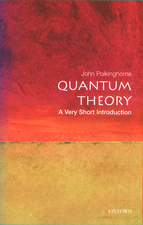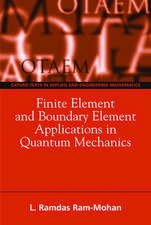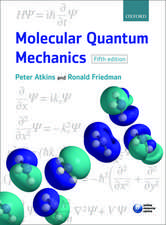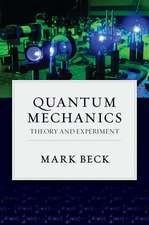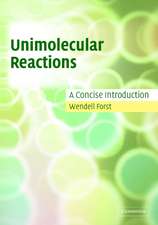Molecular Quantum Similarity in QSAR and Drug Design: Lecture Notes in Chemistry, cartea 73
Autor R. Carbo-Dorca, D. Robert, L. Amat, X. Girones, E. Besaluen Limba Engleză Paperback – 26 iul 2000
Din seria Lecture Notes in Chemistry
-
 Preț: 96.74 lei
Preț: 96.74 lei - 18%
 Preț: 1123.35 lei
Preț: 1123.35 lei - 18%
 Preț: 776.72 lei
Preț: 776.72 lei - 18%
 Preț: 779.57 lei
Preț: 779.57 lei - 18%
 Preț: 1005.74 lei
Preț: 1005.74 lei - 18%
 Preț: 997.88 lei
Preț: 997.88 lei - 18%
 Preț: 1004.00 lei
Preț: 1004.00 lei - 18%
 Preț: 1136.30 lei
Preț: 1136.30 lei - 18%
 Preț: 1117.03 lei
Preț: 1117.03 lei - 18%
 Preț: 1006.55 lei
Preț: 1006.55 lei - 18%
 Preț: 903.62 lei
Preț: 903.62 lei -
 Preț: 377.73 lei
Preț: 377.73 lei -
 Preț: 395.63 lei
Preț: 395.63 lei - 18%
 Preț: 728.43 lei
Preț: 728.43 lei - 18%
 Preț: 782.57 lei
Preț: 782.57 lei - 18%
 Preț: 1112.78 lei
Preț: 1112.78 lei - 15%
 Preț: 688.13 lei
Preț: 688.13 lei - 15%
 Preț: 646.62 lei
Preț: 646.62 lei -
 Preț: 393.35 lei
Preț: 393.35 lei - 18%
 Preț: 1124.30 lei
Preț: 1124.30 lei -
 Preț: 384.86 lei
Preț: 384.86 lei -
 Preț: 383.71 lei
Preț: 383.71 lei -
 Preț: 378.71 lei
Preț: 378.71 lei -
 Preț: 384.09 lei
Preț: 384.09 lei -
 Preț: 387.42 lei
Preț: 387.42 lei -
 Preț: 388.90 lei
Preț: 388.90 lei -
 Preț: 393.35 lei
Preț: 393.35 lei -
 Preț: 384.09 lei
Preț: 384.09 lei -
 Preț: 377.73 lei
Preț: 377.73 lei -
 Preț: 382.95 lei
Preț: 382.95 lei -
 Preț: 384.70 lei
Preț: 384.70 lei - 15%
 Preț: 644.63 lei
Preț: 644.63 lei -
 Preț: 386.00 lei
Preț: 386.00 lei -
 Preț: 389.70 lei
Preț: 389.70 lei -
 Preț: 384.09 lei
Preț: 384.09 lei -
 Preț: 385.25 lei
Preț: 385.25 lei -
 Preț: 392.21 lei
Preț: 392.21 lei -
 Preț: 386.00 lei
Preț: 386.00 lei -
 Preț: 403.37 lei
Preț: 403.37 lei -
 Preț: 378.71 lei
Preț: 378.71 lei -
 Preț: 383.50 lei
Preț: 383.50 lei -
 Preț: 390.63 lei
Preț: 390.63 lei -
 Preț: 389.31 lei
Preț: 389.31 lei
Preț: 379.30 lei
Nou
Puncte Express: 569
Preț estimativ în valută:
72.58€ • 75.93$ • 60.29£
72.58€ • 75.93$ • 60.29£
Carte tipărită la comandă
Livrare economică 03-17 aprilie
Preluare comenzi: 021 569.72.76
Specificații
ISBN-13: 9783540675815
ISBN-10: 3540675817
Pagini: 140
Ilustrații: XII, 123 p.
Dimensiuni: 155 x 235 x 7 mm
Greutate: 0.21 kg
Ediția:Softcover reprint of the original 1st ed. 2000
Editura: Springer Berlin, Heidelberg
Colecția Springer
Seria Lecture Notes in Chemistry
Locul publicării:Berlin, Heidelberg, Germany
ISBN-10: 3540675817
Pagini: 140
Ilustrații: XII, 123 p.
Dimensiuni: 155 x 235 x 7 mm
Greutate: 0.21 kg
Ediția:Softcover reprint of the original 1st ed. 2000
Editura: Springer Berlin, Heidelberg
Colecția Springer
Seria Lecture Notes in Chemistry
Locul publicării:Berlin, Heidelberg, Germany
Public țintă
ResearchCuprins
1 Introduction.- 1.1 Origins and evolution of QSAR.- 1.2 Molecular similarity in QSAR.- 1.3 Scope and contents of the book.- 2 Quantum objects, density functions and quantum similarity measures.- 2.1 Tagged sets and molecular description.- 2.2 Density functions.- 2.3 Quantum objects.- 2.4 Expectation values in Quantum Mechanics.- 2.5 Molecular Quantum Similarity.- 2.6 General definition of molecular quantum similarity measures (MQSM).- 2.7 Quantum self-similarity measures.- 2.8 MQSM as discrete matrix representations of the quantum objects..- 2.9 Molecular quantum similarity indices (MQSI).- 2.10 The Atomic Shell Approximation (ASA).- 2.11 The molecular alignment problem.- 3 Application of Quantum Similarity to QSAR.- 3.1 Theoretical connection between QS and QSAR.- 3.2 Construction of the predictive model.- 3.3 Possible alternatives to the multilinear regression.- 3.4 Parameters to assess the goodness-of-fit.- 3.5 Robustness of the model.- 3.6 Study of chance correlations.- 3.7 Comparison between the QSAR models based on MQSM and other 2D and 3D QSAR methods.- 3.8 Limitations of the models based on MQSM.- 4 Full molecular quantum similarity matrices as QSAR descriptors.- 4.1 Pretreatment for quantum similarity matrices.- 4.2 The MQSM-QSAR protocol.- 4.3 Combination of quantum similarity matrices: the tuned QSAR model.- 4.4 Examples of QSAR analyses from quantum similarity matrices.- 5 Quantum self-similarity measures as QSAR descriptors.- 5.1 Simple QSPR models based on QS-SM.- 5.2 Characterization of classical 2D QSAR descriptors using QS-SM.- 5.3 Description of biological activities using fragment QS-SM.- 6 Electron-electron repulsion energy as a QSAR descriptor.- 6.1 Connection between the electron-electron repulsion energy and QS-SM.- 6.2 ?Vee? as a descriptorfor simple linear QSAR models.- 6.3 Evaluation of molecular properties using ?Vee? as a descriptor.- 7 Quantum similarity extensions to non-molecular systems: Nuclear Quantum Similarity.- 7.1 Generality of Quantum Similarity for quantum systems.- 7.2 Nuclear Quantum Similarity.- 7.3 Structure-property relationships in nuclei.- 7.4 Limitations of the approach.- References.
Textul de pe ultima copertă
The authors introduce the concept of Molecular Quantum Similarity, developed in their laboratory, in a didactic form. The basis of the concept combines quantum theoretical calculations with molecular structure and properties even for large molecules. They give definitions and procedures to compute similarities molecules and provide graphical tools for visualization of sets of molecules as n-dimensional point charts.

